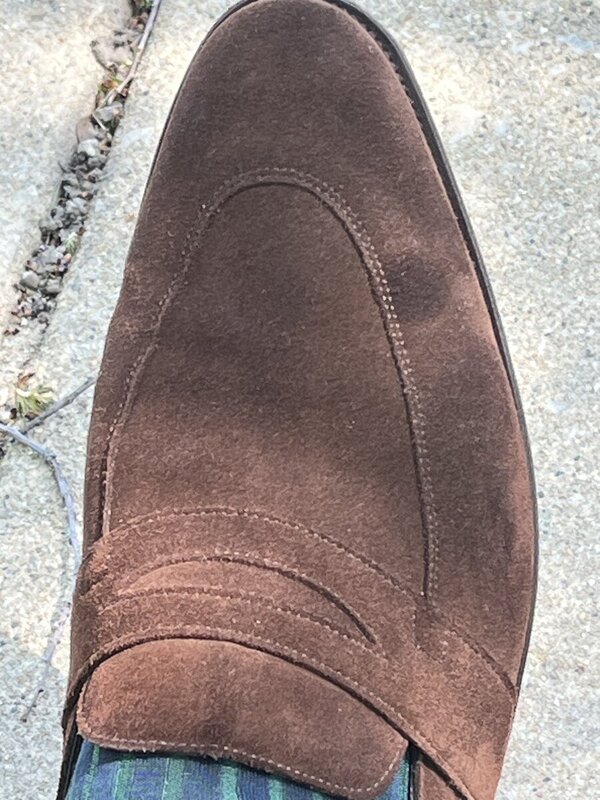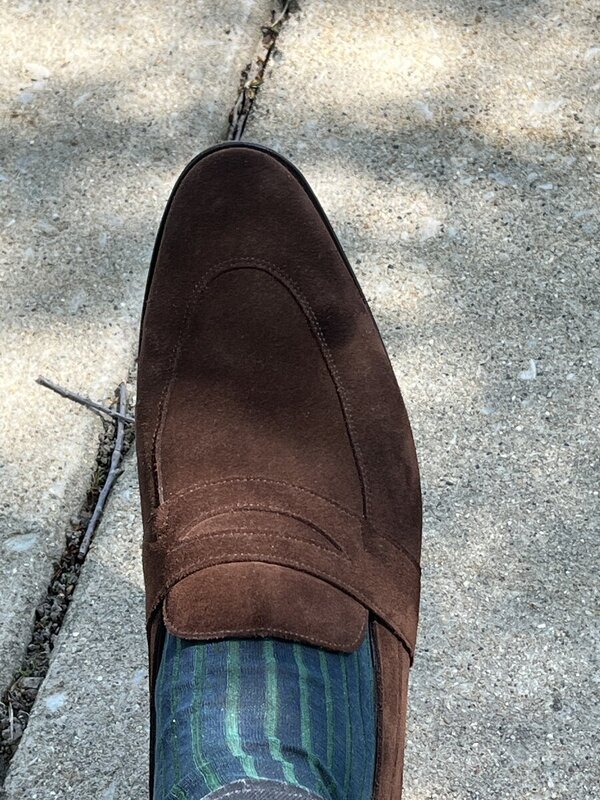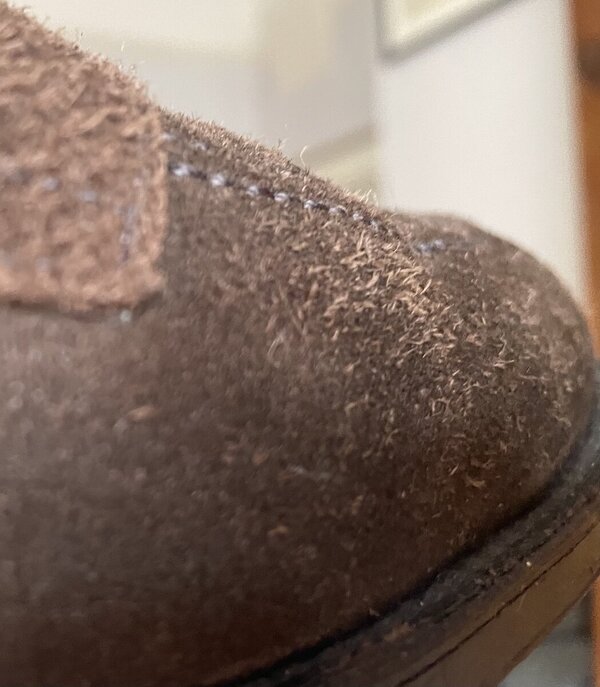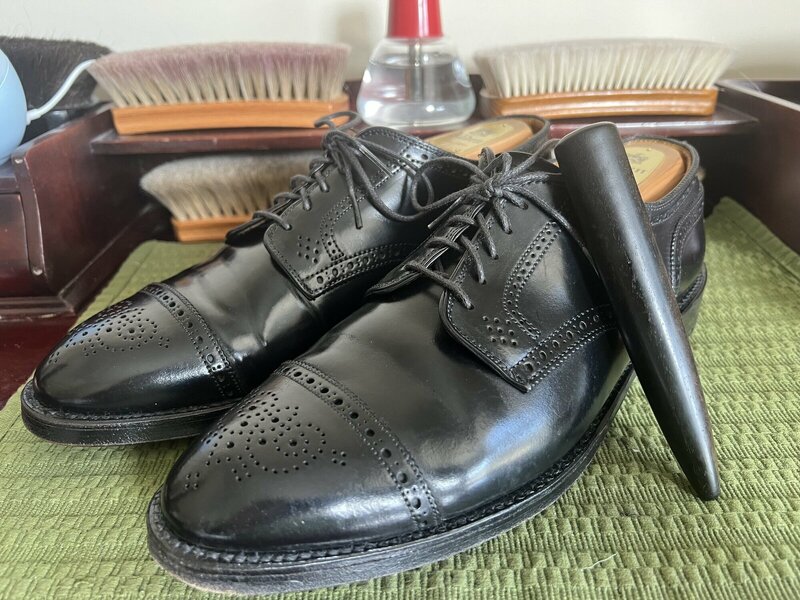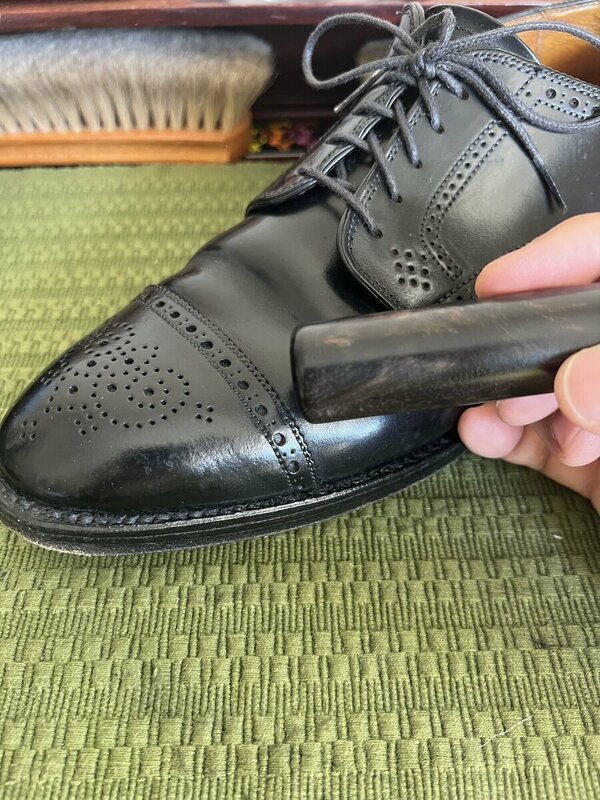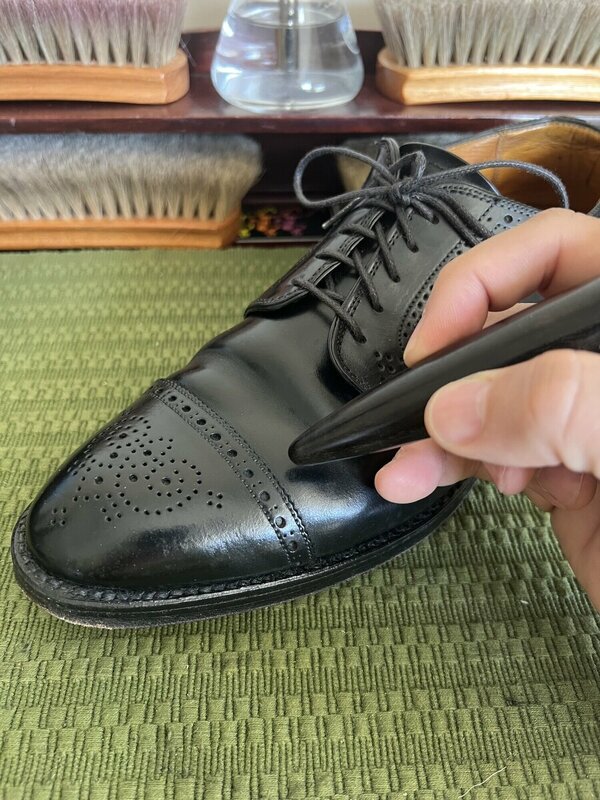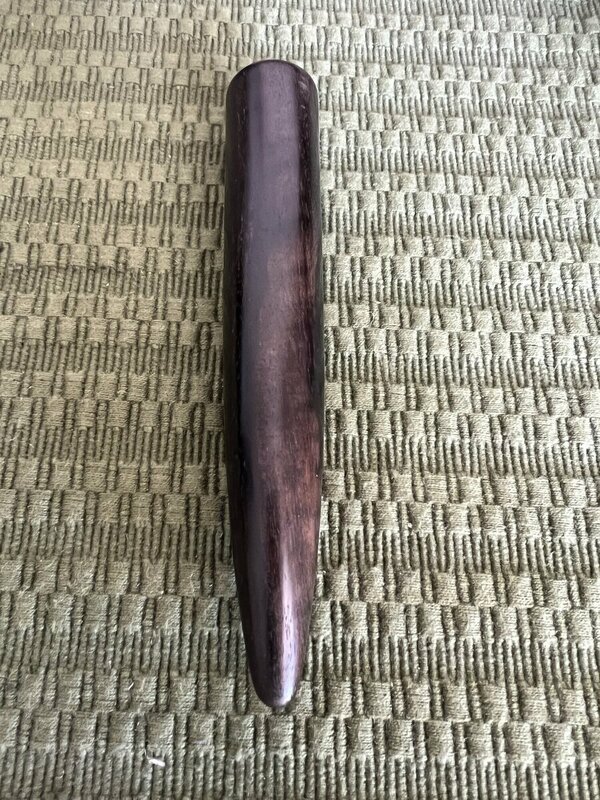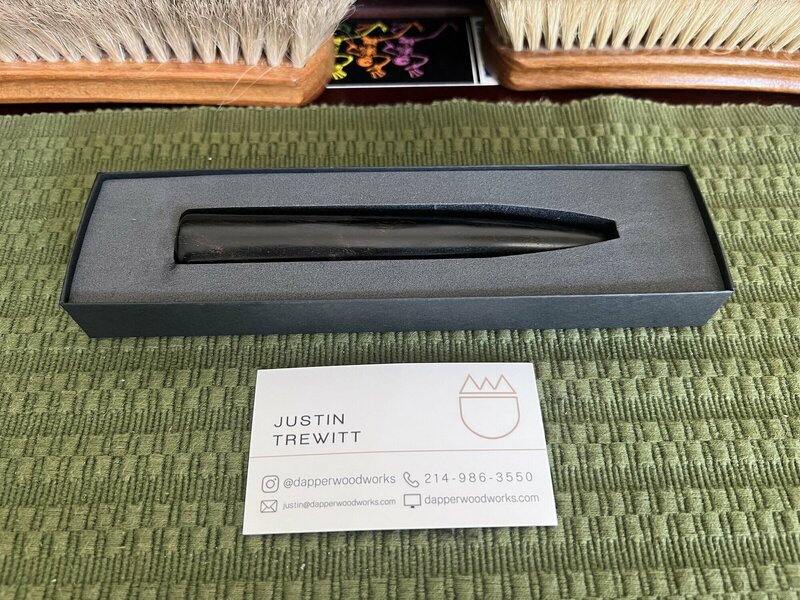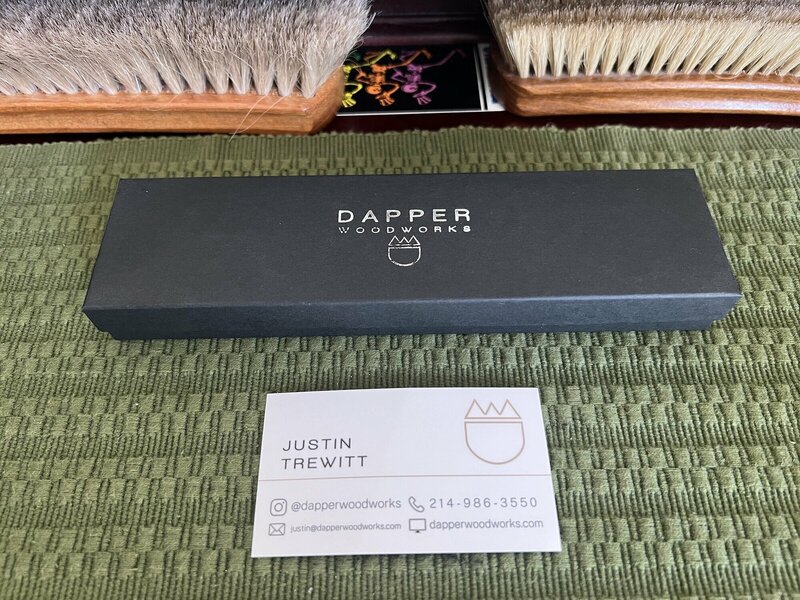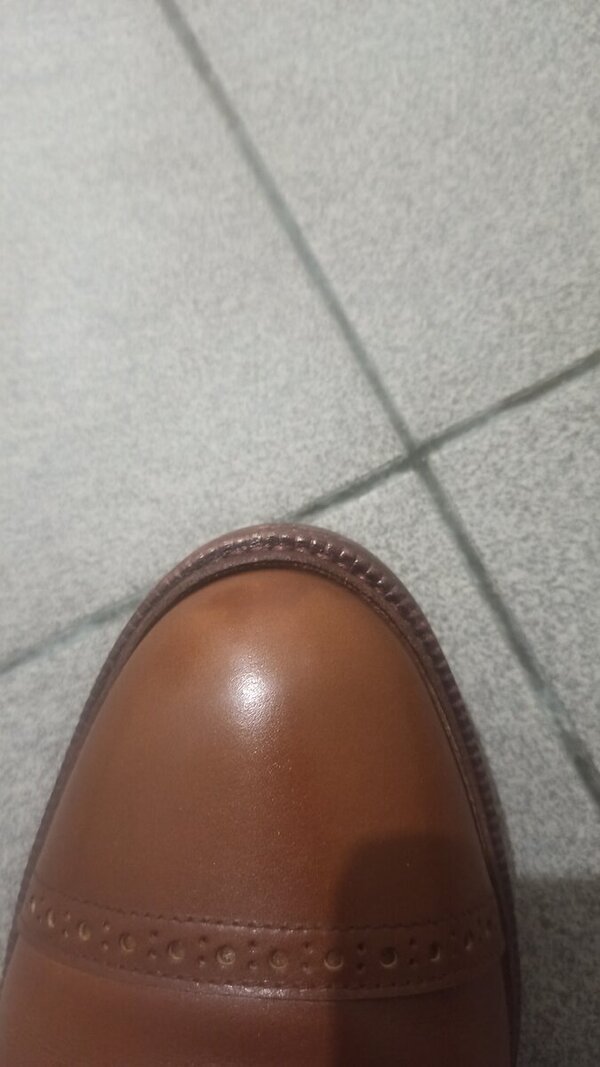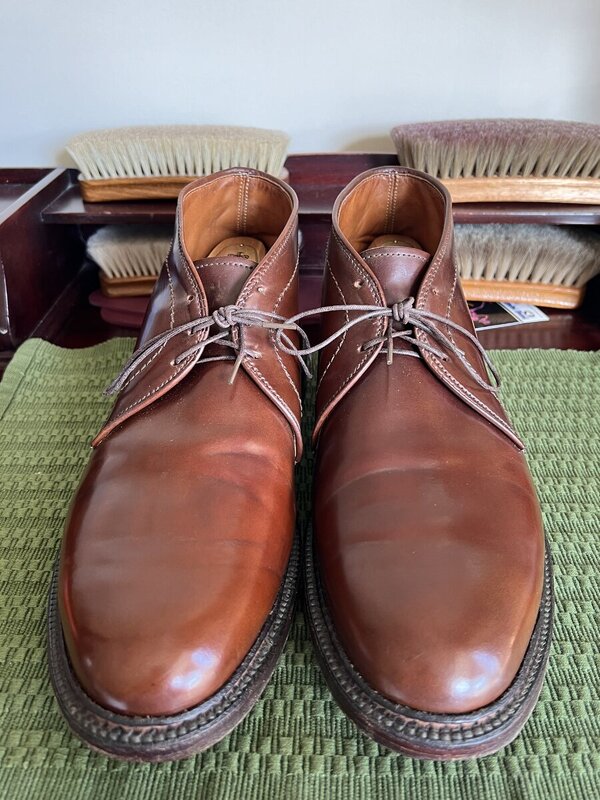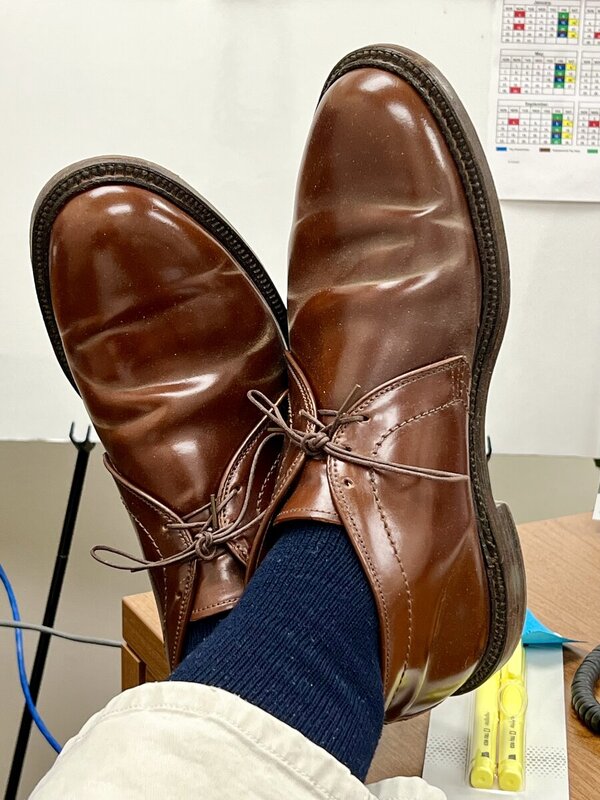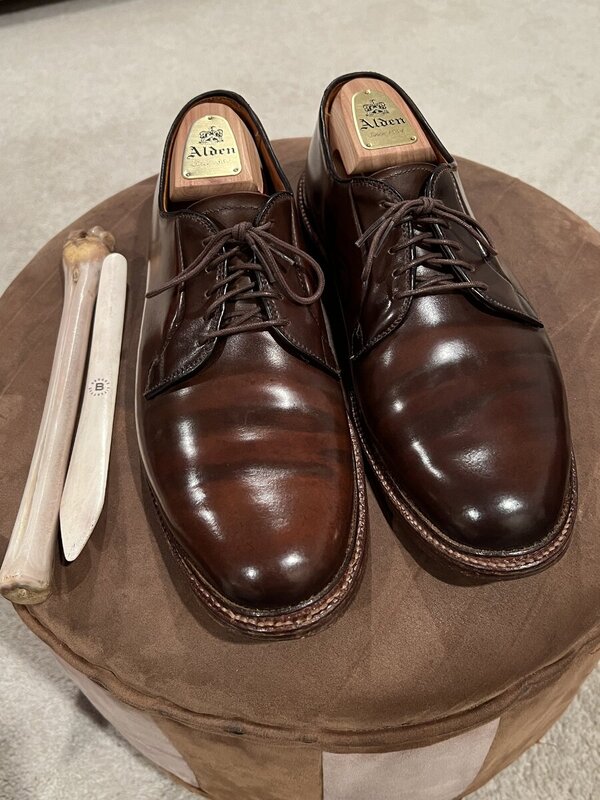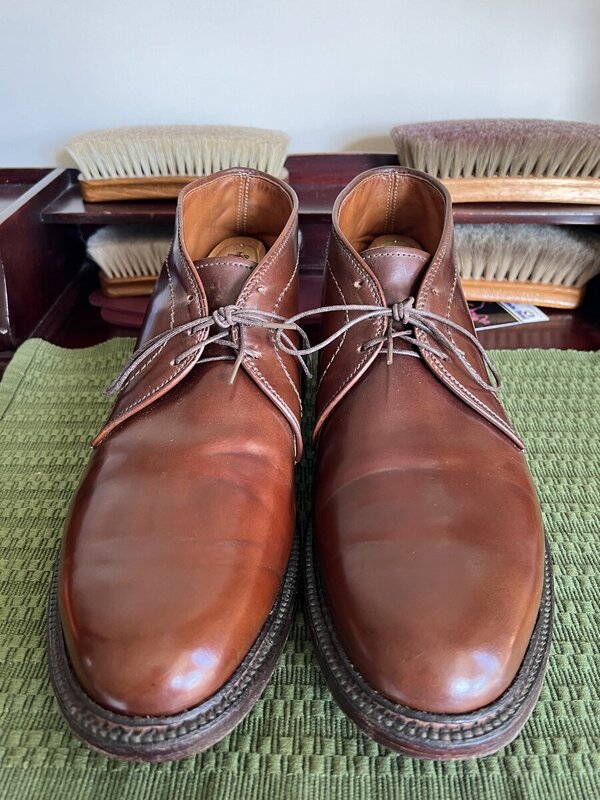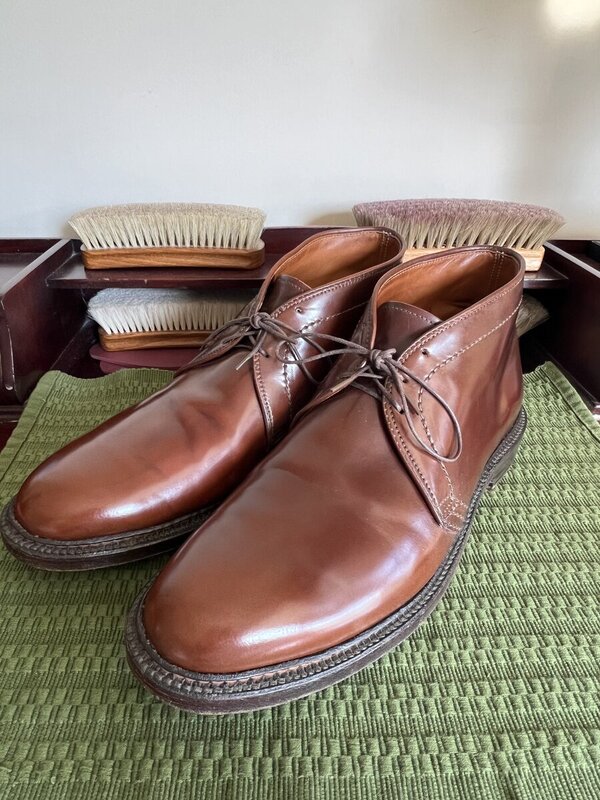ShawnBC
Distinguished Member
- Joined
- Mar 21, 2014
- Messages
- 1,741
- Reaction score
- 921
Hi gents,
Quick question I'm not sure have been covered in the last 619 pages of this thread.
When applying a product (be it conditioner, paste or wax, etc.) to a brogue or punched shoe, how does one keep the product from accumulating inside the little holes?
I have some AE McTavish that have a bad habit of keeping leather conditioner in the brogue holes, thus appearing like white spots all over.
Surely there must be a trick beside tooth-picking the holes one at a time after lotion application?
Thanks!
Quick question I'm not sure have been covered in the last 619 pages of this thread.
When applying a product (be it conditioner, paste or wax, etc.) to a brogue or punched shoe, how does one keep the product from accumulating inside the little holes?
I have some AE McTavish that have a bad habit of keeping leather conditioner in the brogue holes, thus appearing like white spots all over.
Surely there must be a trick beside tooth-picking the holes one at a time after lotion application?
Thanks!


















